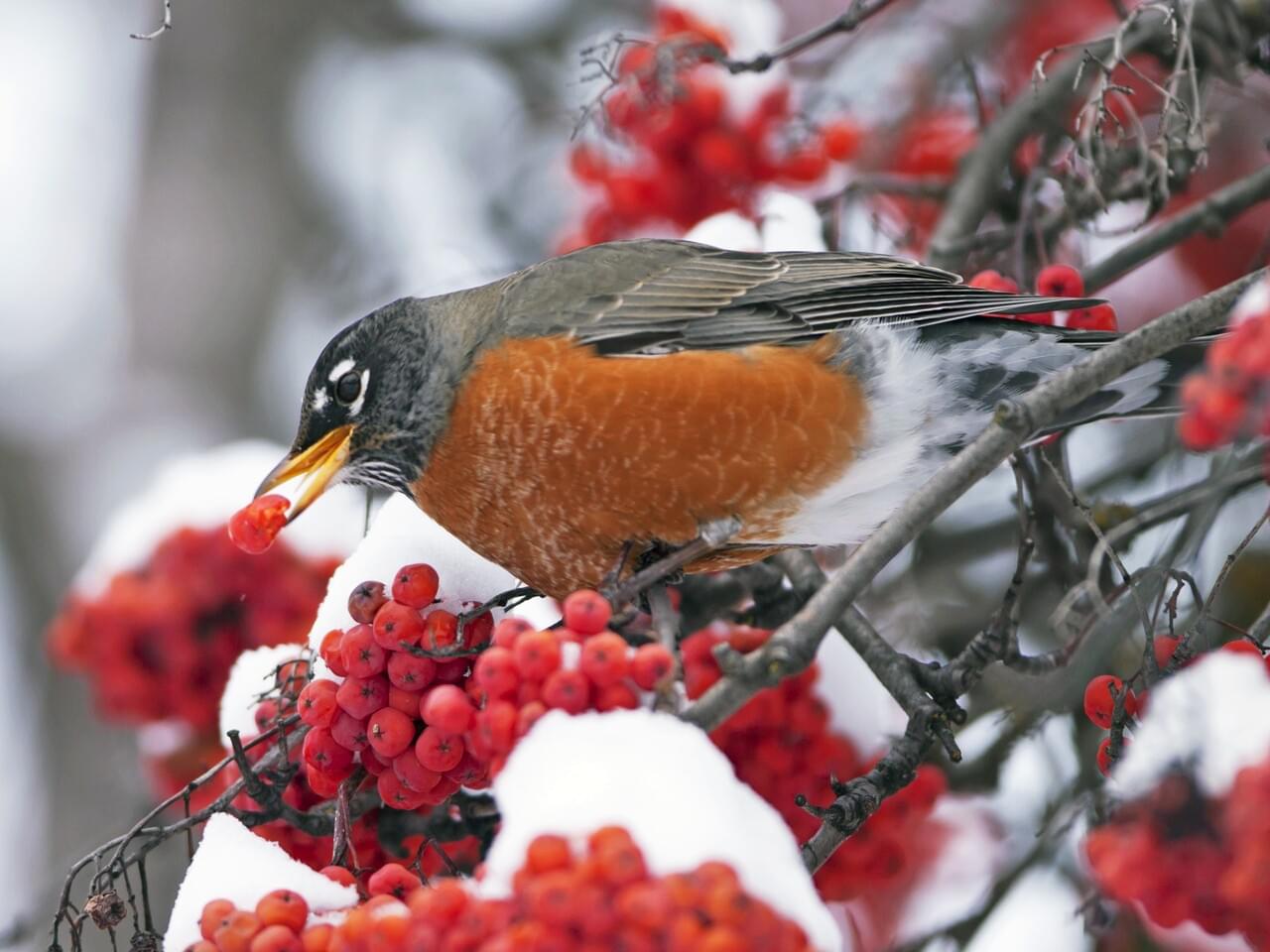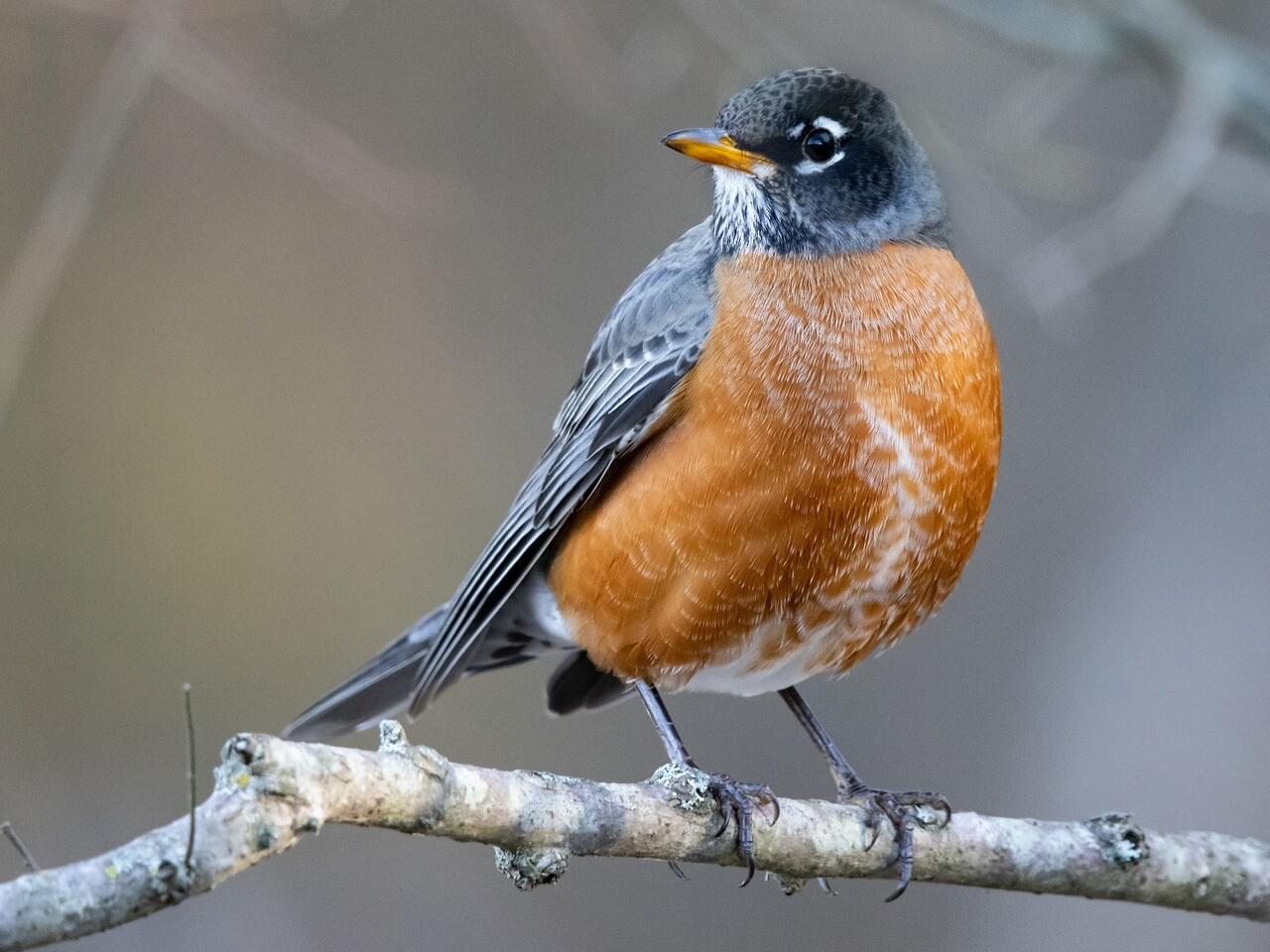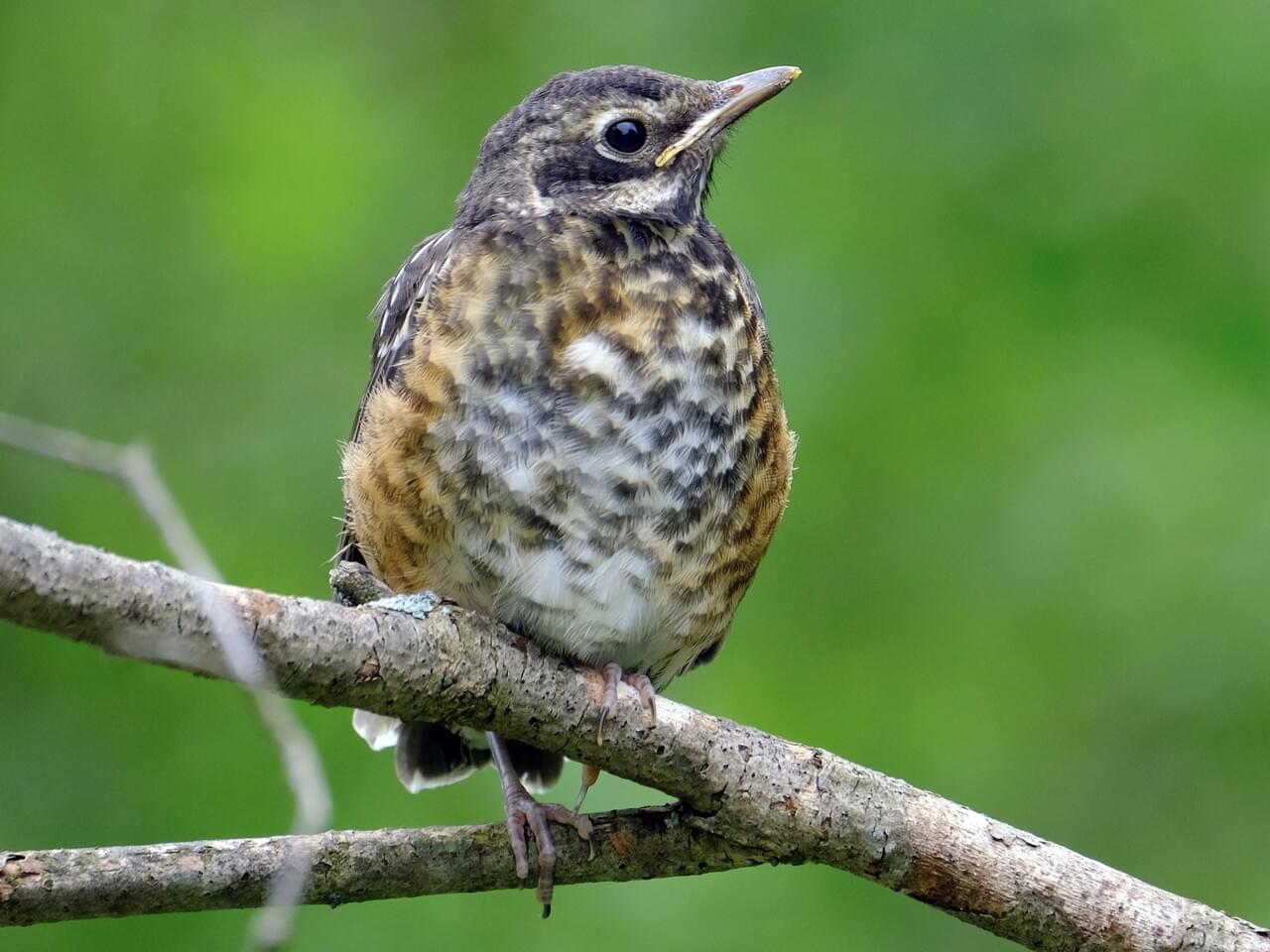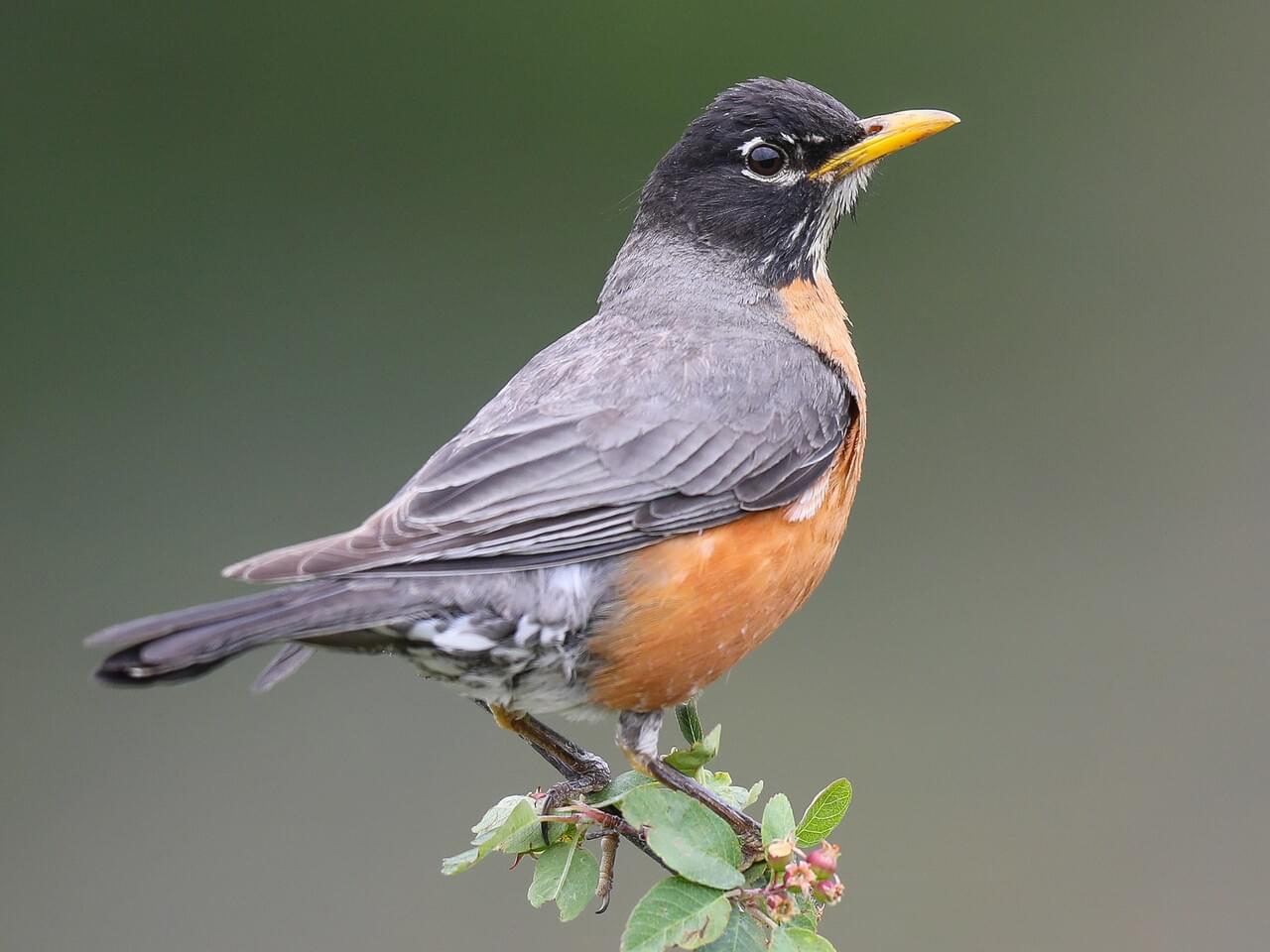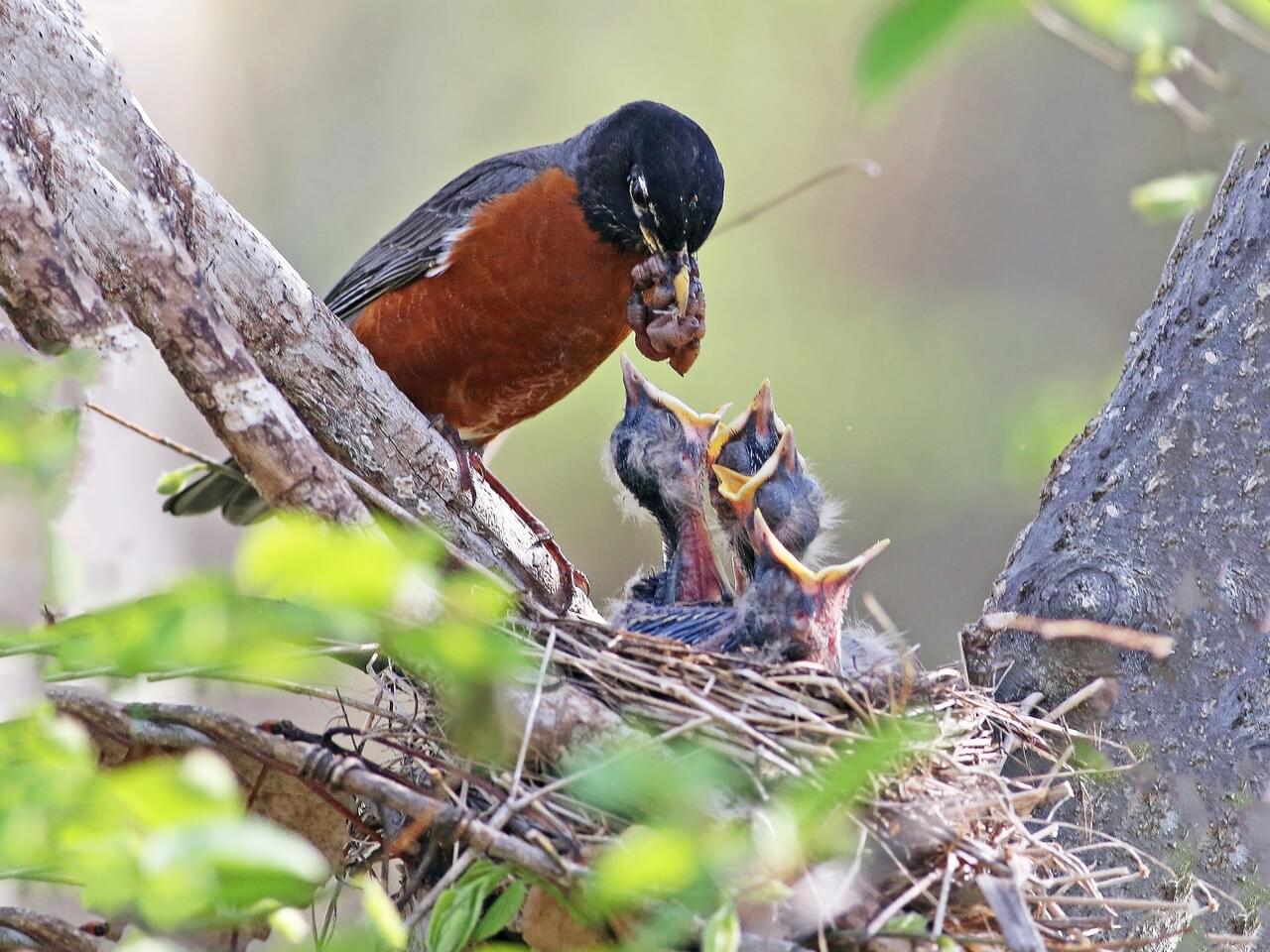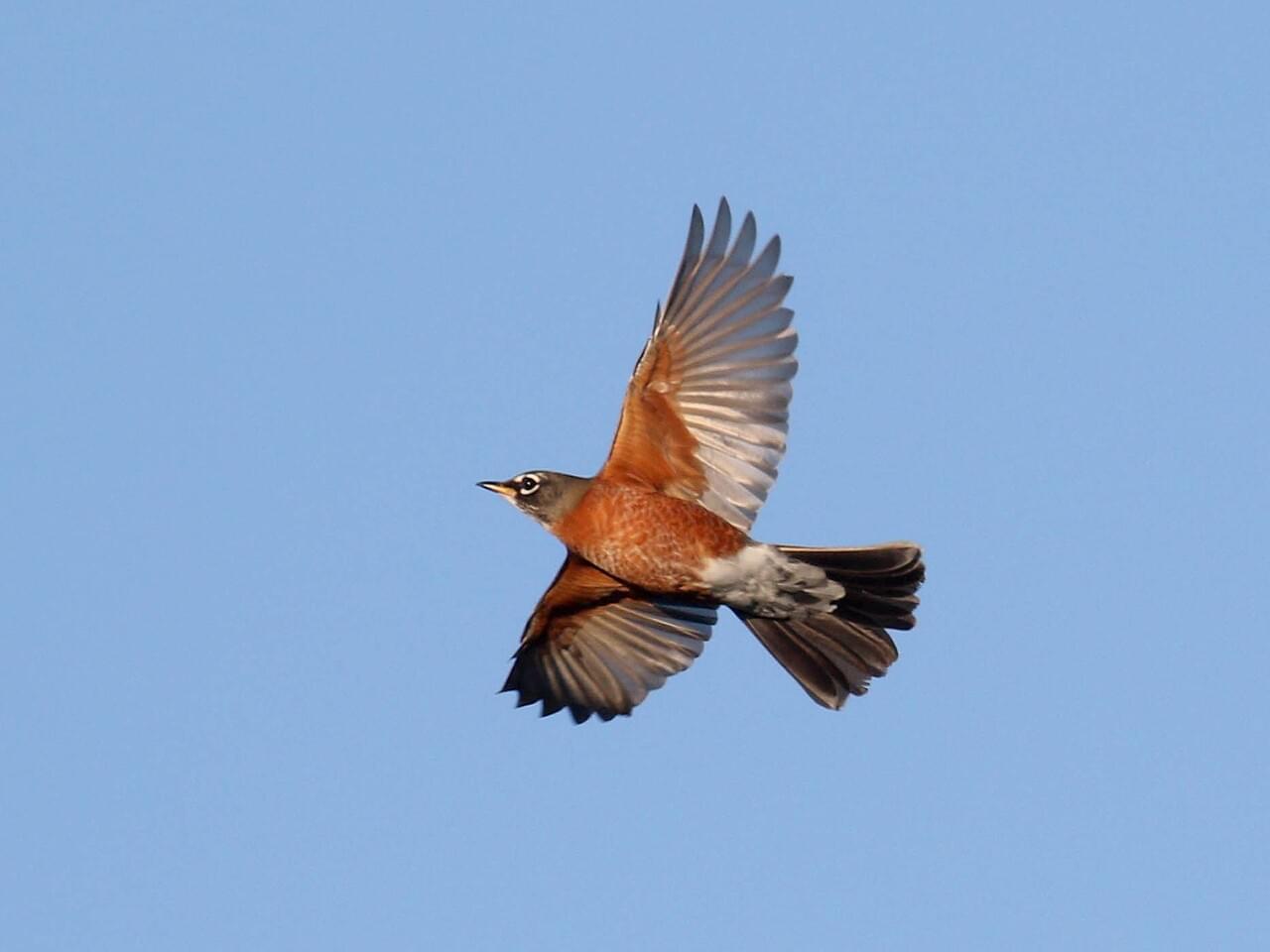 Photo ©
Liz Clayton Fuller
Photo ©
Liz Clayton Fuller
American Robin
Main Focal Species
The quintessential early bird, American Robins are common sights on lawns across North America, where you often see them tugging earthworms out of the ground. Robins are popular birds for their warm orange breast, cheery song, and early appearance at the end of winter. Though they’re familiar town and city birds, American Robins are at home in wilder areas, too, including mountain forests and Alaskan wilderness.
Range
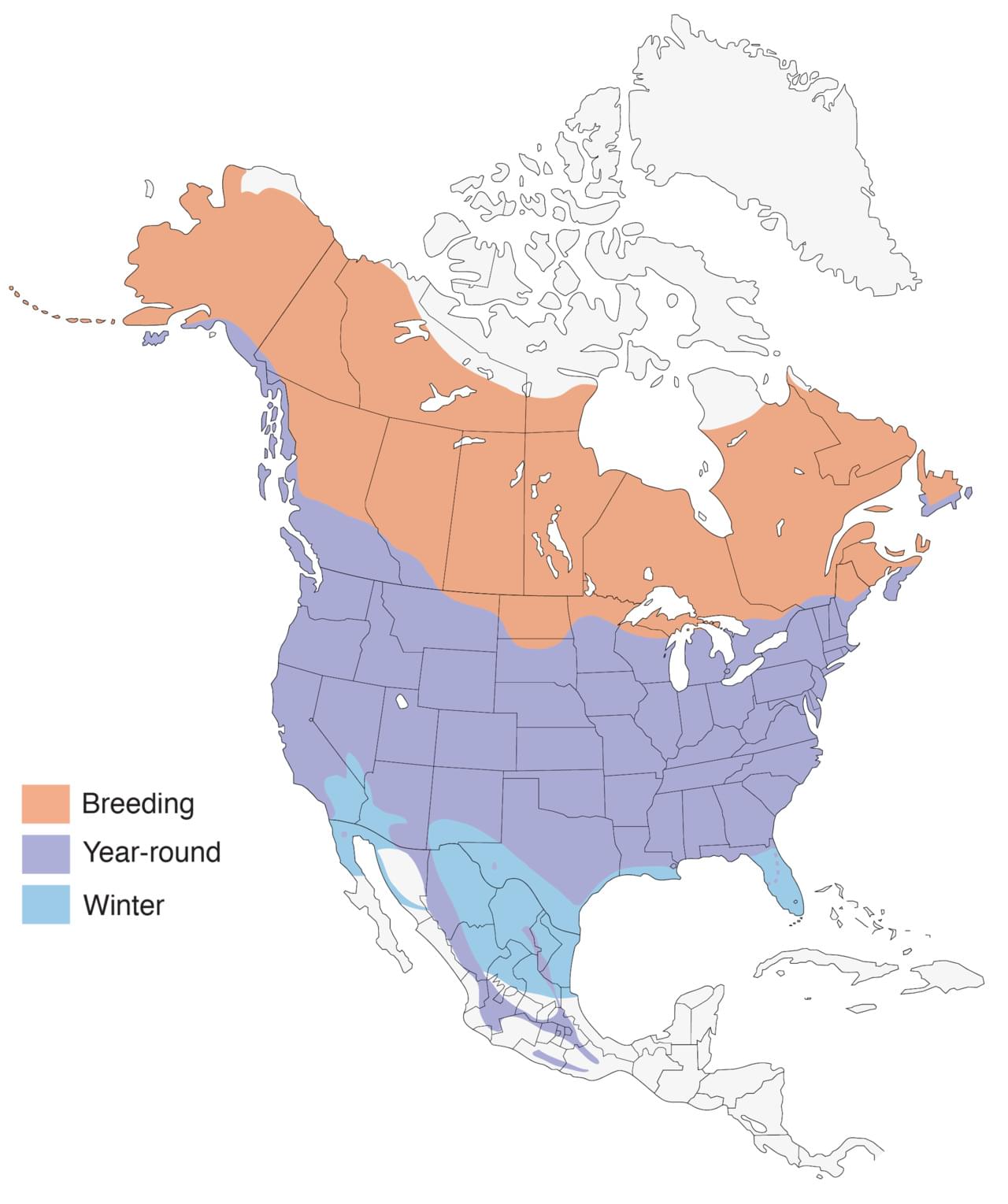
Habitat
American Robins are common birds across the continent. You’ll find them on lawns, fields, and city parks, as well as in more wild places like woodlands, forests, mountains up to near treeline, recently burned forests, and tundra. During winter many robins move to moist woods where berry-producing trees and shrubs are common.
Food
American Robins eat large numbers of both invertebrates and fruit. Particularly in spring and summer they eat large numbers of earthworms as well as insects and some snails. (They have rarely been recorded eating shrews, small snakes, and aquatic insects.) Robins also eat an enormous variety of fruits, including chokecherries, hawthorn, dogwood, and sumac fruits, and juniper berries. One study suggested that robins may try to round out their diet by selectively eating fruits that have bugs in them.
Behavior
When foraging on the ground, the American Robin runs a few steps, then stops abruptly. In long grass, robins may hop or fly just above the ground powered by slow, powerful wingbeats. American Robins often find worms by staring, motionless, at the ground with the head cocked to one side. Robins sometimes fight over worms that others have caught. During fall and winter robins often roost in large flocks and spend much more time in trees. In spring, males attract females by singing, raising and spreading their tails, shaking their wings and inflating their white-striped throats. When pairs are forming in spring, you may see a display in which a male and female approach each other holding their bills wide open and touching them. American Robins are strong, straight, and fast fliers.
Nesting
Females build the nest from the inside out, pressing dead grass and twigs into a cup shape using the wrist of one wing. Other materials include paper, feathers, rootlets, or moss in addition to grass and twigs. Once the cup is formed, she reinforces the nest using soft mud gathered from worm castings to make a heavy, sturdy nest. She then lines the nest with fine dry grass. The finished nest is 6-8 inches across and 3-6 inches high.
Appearance
Typical Sound
© Wil Hershberger | Macaulay Library
Size & Shape
American Robins are fairly large songbirds with a large, round body, long legs, and fairly long tail. Robins are the largest North American thrushes, and their profile offers a good chance to learn the basic shape of most thrushes. Robins make a good reference point for comparing the size and shape of other birds, too.
Color Pattern
American Robins are gray-brown birds with warm orange underparts and dark heads. In flight, a white patch on the lower belly and under the tail can be conspicuous. Compared with males, females have paler heads that contrast less with the gray back.
Plumage Photos
Similar Species
Eastern and Spotted towhees have short, thick bills instead of the American Robin's long, narrow bill. Their chestnut flanks don't extend all the way across the belly and breast like an American Robin. Spotted Towhees have white spotting on either an all-black or rich brown back, unlike the robin's unmarked gray back. The Varied Thrush of the Pacific coast is dark blue-gray above, with a thick dark band across its orange chest.
Did you know?!
- Hundreds of thousands of American Robins can gather in a single winter roost. In summer, females sleep on the nests and males congregate in roosts. As young robins become independent, they join the males in the roost. Female adults go to the roosts only after they have finished nesting.
- American Robins have an expandable esophagus which they will use to store extra fruit on cold winter nights.
- Robins can be aggressive when it comes to defending food supplies. One robin was observed defending a fruiting crab apple tree against 15 Cedar Waxwings!
- On average only 40 percent of American Robin nests successfully produce young. Only 25 percent of those young survive to November.
- Only about half of the robins alive in any year will make it to the next. A lucky robin can live to be 14 years old.

